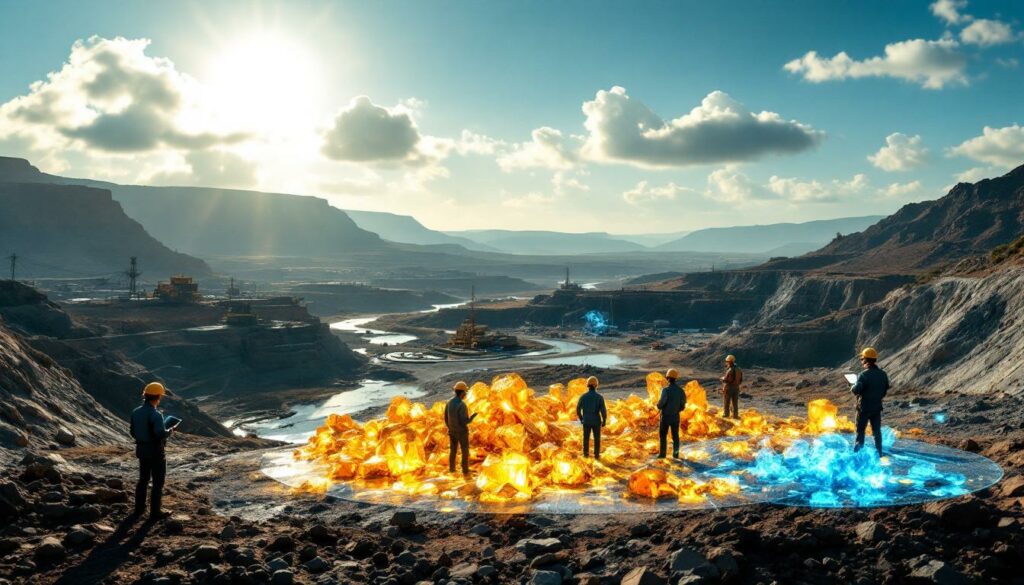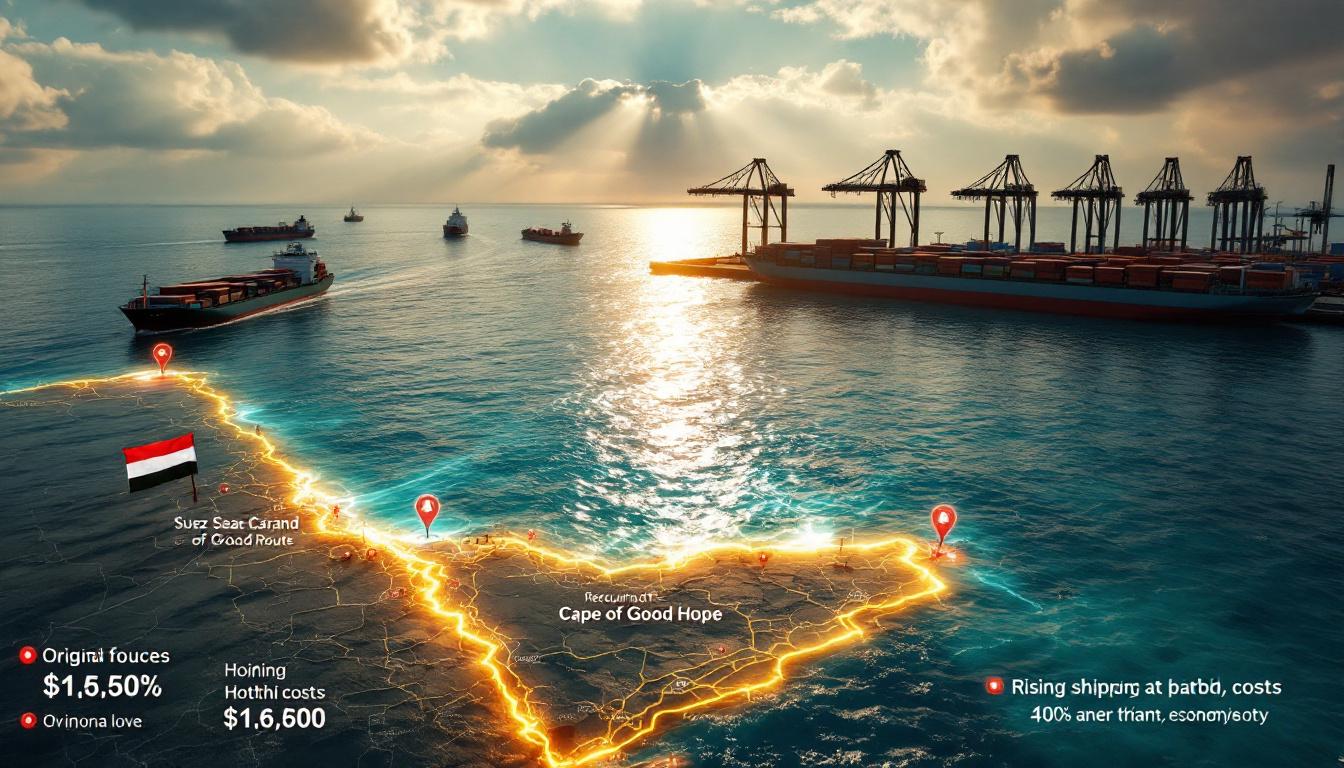How Has Exploration Shaped South Africa's Mining History?
South Africa's mining sector has been the backbone of the country's economy for over a century, contributing significantly to economic growth, infrastructure development, and employment. The rich mineral deposits discovered through mineral exploration importance have positioned South Africa as a global mining powerhouse. According to Minerals Council South Africa, "Mining has done more to build the South African economy than any other sector" in the past 100 years, with the potential to continue this legacy for another century.
Since the discovery of diamonds in Kimberley in the 1870s and gold on the Witwatersrand in 1886, mineral exploration has transformed South Africa's landscape—economically, socially, and physically. These discoveries sparked infrastructure development that would have been unimaginable otherwise, including extensive railway networks, ports, and entire cities.
The Historical Impact of Mining on South Africa's Economy
Mining has been the cornerstone of South Africa's economic development, historically contributing between 6-8% to GDP annually before 2000. The industry has:
- Created millions of jobs directly and indirectly (employment peaked at approximately 500,000 in the 1980s)
- Developed critical infrastructure including railways, roads, and ports
- Established towns and communities around mining operations (Johannesburg itself owes its existence to gold exploration)
- Generated significant tax revenue and export earnings
- Contributed to skills development through institutions like the Geological Survey (established 1908), which trained Africa's first generation of geologists
Current Challenges Facing South Africa's Mining Sector
Despite its historical significance, the mining sector in South Africa is currently experiencing several challenges:
- Declining production across various commodities
- Aging mines with diminishing reserves
- Limited new mineral discoveries due to exploration investment of only $0.2 billion in 2024 (compared to $2.4 billion in Western Australia)
- Regulatory uncertainty and delays
- Infrastructure constraints, particularly in electricity and logistics
- Competition from other mining jurisdictions globally
"Without addressing the exploration bottleneck, South Africa risks allowing its mining sector to gradually decline rather than revitalize," notes mining analyst James Thompson from the Minerals and Mining Research Institute.
Why Is Mineral Exploration Critical for South Africa's Future?
Mineral exploration represents the foundation of a sustainable mining industry. Without continuous exploration efforts, the discovery of new mineral deposits becomes impossible, leading to the eventual decline of the entire sector.
As Western Australia's Mines Minister David Michael emphasizes: "Our ongoing investment in mineral exploration is creating jobs and delivering lasting benefits to regional communities across the state." This insight highlights what South Africa stands to gain by prioritizing exploration.
The Exploration-Production Pipeline
Exploration is the first critical step in the mining value chain:
- Early-stage exploration: Identifying potential mineral deposits through geological mapping, geochemical sampling, and geophysical surveys
- Advanced exploration: Confirming the presence and extent of mineral resources through drilling programs
- Resource definition: Quantifying the size and grade of deposits through detailed drilling and sampling
- Feasibility studies: Determining economic viability through technical, environmental, and financial assessments
- Mine development: Constructing infrastructure and production facilities
- Production: Extracting and processing minerals
Without investment in the early stages of this pipeline, the later stages cannot occur, resulting in diminished mining activity over time. This pipeline typically takes 3-7 years from exploration to resource definition, with additional years required for development.
Economic Benefits of Increased Exploration Activity
Revitalizing exploration in South Africa would yield numerous benefits:
- Job creation: Both direct employment in exploration activities (5,000-10,000 jobs in the short term) and indirect jobs through support services
- Community development: Exploration activities bring investment to regional areas, including infrastructure improvements
- Skills development: Training and employment of geologists, field technicians, and support staff
- Economic diversification: Development of exploration service industries
- Future tax revenue: Laying groundwork for future mining operations and associated tax contributions
The Minerals Council South Africa estimates that successful exploration programs could generate 20,000-40,000 jobs within 3-7 years, with economic contributions of $5-10 billion in the medium term.
What Are the Key Barriers to Exploration in South Africa?
Several significant obstacles have hindered exploration investment in South Africa, requiring urgent attention to revitalize the sector. These barriers help explain why South Africa attracts only $0.2 billion in exploration investment compared to competitors like Canada ($2.1 billion) and Australia ($2.4 billion).
Regulatory and Administrative Challenges
The regulatory environment presents major hurdles for exploration companies:
- Delayed implementation of mineral cadastre system: As Martin Creamer of Mining Weekly reports, "Government has failed to deliver its phased-in commissioning of a mineral cadastre system." This absence creates uncertainty for investors.
- Lengthy permitting processes: Exploration permits can take 12-36+ months to secure in South Africa, compared to just 2-3 months in Western Australia.
- Regulatory uncertainty: Frequent changes to mining legislation and policies create an unpredictable investment environment.
- Administrative bottlenecks: Insufficient capacity within government departments to process applications efficiently.
"Exploration companies simply cannot afford to wait years for permits when competing jurisdictions offer approvals in months," explains Dr. Nomsa Mbeki, mining governance specialist at the University of Pretoria.
Comparison with Leading Mining Jurisdictions
South Africa's exploration challenges become evident when compared to successful mining jurisdictions:
| Jurisdiction | Cadastre System | Permit Timeline | Exploration Investment (2024) |
|---|---|---|---|
| Western Australia | Modern digital system | 2-3 months | $2.4 billion |
| Canada | Provincial online systems | 3-6 months | $2.1 billion |
| Chile | Transparent digital platform | 4-6 months | $0.9 billion |
| South Africa | Manual system (cadastre pending) | 12-36+ months | $0.2 billion |
Infrastructure and Access Limitations
Beyond regulatory issues, exploration companies face practical challenges:
- Electricity constraints: Unreliable power supply affects field operations and increases costs
- Transportation infrastructure: Poor road conditions in remote areas increase exploration costs by 15-30%
- Water access: Limited water availability in certain regions requires expensive solutions
- Security concerns: Safety issues in some potential exploration areas, with illegal mining activities costing the industry approximately R7 billion annually
- Land access disputes: Challenges in securing access to land for exploration activities, particularly in areas with competing land claims
How Does a Modern Mineral Cadastre System Enable Exploration?
A mineral cadastre is a comprehensive land management system that records and manages mineral rights, permits, and licenses. It serves as the foundation for effective mineral resource management and is widely recognized as the most critical enabler for exploration investment.
Essential Features of an Effective Cadastre System
A modern mineral cadastre system should include:
- Digital accessibility: Online platform accessible to all stakeholders 24/7
- Transparency: Clear visibility of existing rights and available areas
- Real-time updates: Immediate reflection of changes in mineral rights status
- Geographic information system (GIS) integration: Spatial representation of mineral rights
- Automated workflows: Streamlined application and approval processes
- Data security: Protection of sensitive information while maintaining transparency
- Public reporting: Regular publication of statistics and performance metrics
Chile's digital cadastre implementation demonstrates the impact of these features, with exploration applications increasing by 40% in the five years following its launch.
Benefits of Implementing a Modern Cadastre
The implementation of a modern cadastre system would deliver significant benefits:
- Increased investor confidence: Transparent and predictable rights management
- Reduced corruption risk: Limited discretionary decision-making
- Faster processing times: Automated workflows reducing bureaucratic delays by 60-80%
- Better land use planning: Comprehensive view of all mineral rights
- Improved governance: Enhanced accountability and monitoring
- Increased exploration activity: More companies willing to invest in a transparent system
"The absence of a functional cadastre system is probably the single biggest deterrent to exploration investment in South Africa today," states mining lawyer Tebogo Mokoena. "Fixing this one issue could unlock billions in investment."
What Can South Africa Learn from Global Exploration Success Stories?
Several countries have successfully revitalized their mining sectors through exploration-friendly policies and systems, offering valuable lessons for South Africa.
Western Australia's Exploration Incentive Scheme
Western Australia has implemented a highly successful approach to stimulating mineral exploration:
- Co-funded drilling program: Government covers up to 50% of direct drilling costs
- Pre-competitive geoscience data: Free access to high-quality geological information
- Streamlined permitting: Efficient approval processes with clear timelines
- Regular policy reviews: Continuous improvement of the regulatory framework
- Community engagement: Programs to ensure local communities benefit from exploration
The results have been remarkable, with Western Australia's Mines Minister David Michael noting: "Our ongoing investment in mineral exploration is creating jobs and delivering lasting benefits to regional communities across the state." This investment ($2.4 billion in 2024) has led to major lithium and other critical mineral discoveries, particularly in the Pilbara region.
Canada's Flow-Through Share System
Canada has implemented innovative financial incentives to boost exploration:
- Tax incentives: Investors can claim tax deductions for exploration expenses
- Flow-through shares: Special financial instruments that "flow through" tax benefits to investors, boosting junior miner funding by approximately 30%
- Provincial coordination: Harmonized regulations across different provinces
- Junior miner support: Programs specifically designed to help smaller exploration companies
- Indigenous partnerships: Framework for collaboration with First Nations communities, with 25% of projects requiring consent
Chile's Transparent Rights Management
Chile has established itself as a leading mining jurisdiction through:
- Clear legal framework: Well-defined mining code with limited ambiguity
- Digital cadastre: Fully functional online system for mineral rights management
- Stability guarantees: Long-term investment protection mechanisms (15-year clauses)
- Geological survey support: Strong government institution providing baseline data
- International integration: Policies aligned with global best practices
- Community royalties: Approximately 5% of revenues directed to local communities
"Chile's transformation from an uncertain jurisdiction to a mining powerhouse began with cadastre reform," explains mining economist Carlos Figueroa. "Their digital system became the foundation for everything that followed."
What Steps Should South Africa Take to Revitalize Exploration?
Based on global best practices and South Africa's specific context, several key actions could help revitalize the country's exploration sector.
Immediate Priority: Implement the Mineral Cadastre System
The most urgent requirement is the implementation of the long-promised mineral cadastre system:
- Accelerate development: Prioritize resources for rapid deployment
- Phased implementation: Roll out core functionality first, beginning with online applications
- Transparency commitment: Ensure all stakeholders can access relevant information
- Training program: Develop capacity within government to manage the system
- Regular auditing: Independent verification of system performance
The Minerals Council South Africa emphasizes that "government has to play its role and exploration enabling is key," with the cadastre system being the cornerstone of this enabling environment.
Policy and Regulatory Reforms
Beyond the cadastre, broader policy reforms are needed:
- Streamlined permitting: Establish clear timelines for approval processes (target: 90-day guarantees similar to Western Australia)
- Regulatory certainty: Commit to policy stability for extended periods
- Tax incentives: Consider exploration-specific tax benefits similar to Canada's flow-through shares
- Pre-competitive data: Invest in basic geological mapping and make data freely available
- One-stop-shop: Create a single point of contact for exploration companies
Public-Private Partnerships for Exploration
Collaboration between government and industry could accelerate progress:
- Co-funded exploration: Government contribution to high-risk early-stage exploration
- Industry advisory board: Regular consultation with exploration companies
- Skills development initiatives: Joint programs to train exploration professionals
- Technology partnerships: Collaboration on innovative exploration technologies
- Community development frameworks: Shared responsibility for social development
The short-term target should be to increase exploration investment to $500 million within 3 years, creating 5,000-10,000 jobs and laying the foundation for sustainable growth.
How Would Revitalized Exploration Benefit South African Communities?
The benefits of increased exploration activity would extend beyond the mining sector to positively impact local communities and the broader economy, particularly in rural areas where economic opportunities are limited.
Job Creation and Skills Development
Exploration activities generate diverse employment opportunities:
- Field technicians: Local hiring for sampling and field support
- Geologists and geophysicists: High-skilled technical positions
- Support services: Logistics, accommodation, catering, and transportation
- Laboratory services: Sample preparation and analysis
- Administrative roles: Office support and management positions
These opportunities provide pathways for skills development and career advancement in communities that often have limited economic prospects.
Regional Development and Infrastructure
Exploration companies often invest in local infrastructure:
- Road improvements: Access requirements lead to upgraded transportation networks
- Water systems: Development of water resources that can benefit communities (such as solar-powered boreholes in the Northern Cape)
- Power infrastructure: Energy solutions that may extend to community use
- Telecommunications: Improved connectivity for remote operations
- Community facilities: Investments in local amenities and services
South32's manganese operations in the Northern Cape demonstrate how exploration can lead to sustainable community benefits, with approximately 40% of supplies sourced locally and significant infrastructure development.
Long-term Economic Benefits
Successful exploration leads to sustainable economic development:
- Mining operations: New mines creating decades of economic activity
- Supply chain development: Local businesses serving the mining sector
- Tax revenue: Increased government income for public services
- Export earnings: Foreign exchange from mineral exports
- Knowledge economy: Development of technical expertise and services
As Western Australia's Mines Minister noted, these benefits are "lasting" and transform entire regions, not just isolated communities.
What Role Can Technology Play in Modern Mineral Exploration?
Technological advancements are transforming exploration methodologies, offering opportunities for South Africa to leapfrog traditional approaches and make discoveries that were previously impossible.
Advanced Geophysical Techniques
Modern exploration relies increasingly on sophisticated geophysical methods:
- Airborne electromagnetic surveys: Identifying conductive mineral bodies at depth
- 3D seismic imaging: Mapping subsurface structures with unprecedented detail
- Hyperspectral remote sensing: Identifying mineral signatures from satellite data
- Drone-based magnetic surveys: High-resolution mapping of magnetic anomalies at 80% lower cost than traditional methods
- Gravity gradiometry: Detecting density variations indicating mineral deposits
These technologies allow explorers to "see" beneath the surface without extensive physical disturbance, dramatically improving discovery rates while minimizing environmental impact.
Data Analytics and Artificial Intelligence
The digital revolution is enhancing exploration efficiency:
- Machine learning algorithms: Identifying patterns in geological data that human analysts might miss
- Predictive modeling: Forecasting likely locations of mineral deposits based on multiple data inputs
- Big data integration: Combining multiple data sources for comprehensive analysis
- Automated interpretation: Reducing time from data collection to target identification by up to 70%
- Digital twins: Virtual representations of geological environments for scenario testing
Rio Tinto's implementation of AI in mining innovation has reportedly increased productivity by 20%, demonstrating the tangible benefits of these technologies.
Environmentally Sensitive Exploration Methods
Modern exploration emphasizes minimal environmental impact:
- Non-invasive sampling techniques: Reducing physical disturbance
- Portable XRF analyzers: On-site analysis reducing sample transport
- Biodegradable drilling fluids: Minimizing environmental contamination by 90% compared to traditional fluids
- Rehabilitation protocols: Immediate restoration of exploration sites
- Remote sensing: Reducing the need for physical access to sensitive areas
"Today's exploration technologies allow us to make discoveries with a fraction of the environmental footprint required even a decade ago," explains environmental geoscientist Dr. Thandi Nkosi. "This is crucial for operating in South Africa's diverse ecosystems."
What Is the Future Outlook for South Africa's Mining Sector?
With appropriate policy reforms and investment in mineral exploration to revive South Africa's mining sector, the industry could experience a significant revitalization, continuing its legacy as an economic powerhouse.
Potential for New Discoveries
Despite its long mining history, South Africa still holds considerable mineral potential:
- Deep-level extensions: Resources below current mining depths
- Overlooked commodities: Minerals not historically prioritized
- Critical minerals: Deposits of elements essential for green technology
- Reprocessing opportunities: Recovery of minerals from historical waste
- Unexplored regions: Areas with limited historical exploration
The Minerals Council South Africa has emphasized that the sector "still has the potential to do the same [economic building] in the next 100 years" as it has in the past century, but this potential can only be realized through renewed exploration.
Economic Impact Projections
A revitalized exploration sector could deliver substantial economic benefits:
| Timeframe | Exploration Investment
Ready to Stay Ahead of Major Mineral Discoveries?
Gain real-time alerts on significant ASX mineral discoveries through Discovery Alert's proprietary Discovery IQ model, turning complex mineral data into actionable investment insights before the wider market responds. Visit the Discovery Alert discoveries page to understand how major mineral discoveries have historically generated substantial returns for early investors.




